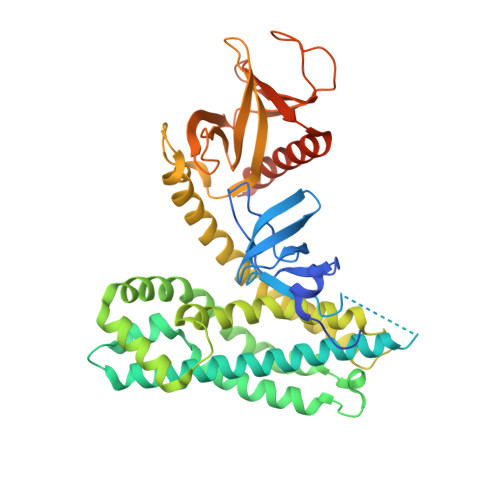Release of autoinhibition of ASEF by APC leads to CDC42 activation and tumor suppression.
Mitin, N., Betts, L., Yohe, M.E., Der, C.J., Sondek, J., Rossman, K.L.(2007) Nat Struct Mol Biol 14: 814-823
- PubMed: 17704816
- DOI: https://doi.org/10.1038/nsmb1290
- Primary Citation of Related Structures:
2PZ1 - PubMed Abstract:
Autoinhibition of the Rho guanine nucleotide exchange factor ASEF is relieved by interaction with the APC tumor suppressor. Here we show that binding of the armadillo repeats of APC to a 'core APC-binding' (CAB) motif within ASEF, or truncation of the SH3 domain of ASEF, relieves autoinhibition, allowing the specific activation of CDC42. Structural determination of autoinhibited ASEF reveals that the SH3 domain forms an extensive interface with the catalytic DH and PH domains to obstruct binding and activation of CDC42, and the CAB motif is positioned adjacent to the SH3 domain to facilitate activation by APC. In colorectal cancer cell lines, full-length, but not truncated, APC activates CDC42 in an ASEF-dependent manner to suppress anchorage-independent growth. We therefore propose a model in which ASEF acts as a tumor suppressor when activated by APC and inactivation of ASEF by mutation or APC truncation promotes tumorigenesis.
Organizational Affiliation:
Lineberger Comprehensive Cancer Center, University of North Carolina School of Medicine, Chapel Hill, North Carolina 27599, USA.














